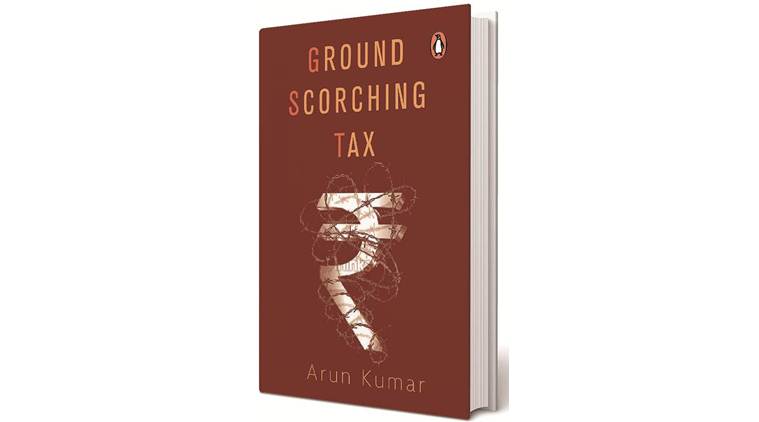
Ground Scorching Tax
Arun Kumar
Penguin Portfolio
288 pages
Rs 499
The eponymous title says it all: Goods and Services Tax (GST) is “a disaster for the economy”. The book, written by a distinguished academic, an authority on black money and a self-confessed contrarian, disparagingly examines the implementation of GST in India today. He concludes that it should be abolished in favour of a retail sales tax.
According to the author, GST stifles the growth of the unorganised sector leading to loss of employment. This fall, he asserts, will result in lower demand, lower capacity utilisation and ultimately lowered growth. Though in some cases prices have declined, on the whole prices have risen after GST was implemented. The partial GST model which was adopted has not helped. Petroleum products and potable alcohol, real estate and electricity duty have been excluded from the tax base. He argues that the GST imposes a heavy compliance burden with seven tax rates and 37 returns to be filed annually. The exemptions given to items of mass consumption disallow input tax credit and are, thus, counterproductive. The GST Network (GSTN), set up primarily to match sales and purchases to counter tax evasion, has not performed. Worse, GST has failed in controlling black money.
The author suggests that the GST should be replaced by a single retail sales tax levied at the final stage with no taxation at the upstream stages of procurement, manufacture and distribution. This tax is claimed to be simpler since it would be collected from fewer entities — only the final sellers to the consumer. There would be no need for complexities like input tax credit, reverse charge mechanism and e-way bills.
There are two major problems with the author’s analysis. First, the book is imbued with confirmation bias — the author frequently cites his earlier dire predictions on the future of GST in support of his conclusions. Secondly, it examines the GST as it was in its nascent stages in March 2018, more than a year ago. Much has changed in the GST structure over the last 13 months, which effectively address the author’s criticism. Rates have been reduced for a number of goods. The registration threshold has been raised to Rs 40 lakhs for the suppliers of goods. Units with turnover below this are totally exempt from GST. The composition threshold has been raised to Rs 1.5 crore. Units below this will pay only 1 per cent GST and file only quarterly returns. The unorganised sector and small units have been made more competitive, their compliance burden reduced and their interface with the GST administration minimised.
GST, right from its inception, was never intended to check black money. It is an unfair cross to place on the back of an already burdened GST. As the Panama Papers have proved, even economies more formalised than India have problems with black money and to blame GST for failing to address it is uncharitable. The RBI governor’s recent monetary policy statement shows growth at above 7 per cent, subdued inflation and capacity utilisation in the manufacturing sector running above its long-term average. Thus, many of the author’s predictions have been belied.
The cure proposed by the author — replacement of the GST by a retail sales tax — may be worse than the ailment. A tax levied only at the retail stage cannot be successful in India, where all retail sales cannot be tracked. This will only magnify the flow of black economy which the author decries. In fact, the proposal of a retail tax at a single point is a retrograde step, taking us back to the previous general sales tax regimes.
Admittedly, all is not well in the GST today. There are too many rates. Petroleum products, electricity duty , stamp duty have still not been included in the GST. The e-way bill demands information already available in the lorry receipt and tax invoice. Compensation cess collections are being treated as a revenue source by the government, instead of as a temporary revenue gap filler. The design of the IGST is unnecessarily complex. The appropriation of IGST revenue is contentious. Refund process under the GST, particularly for exporters, is burdensome. There is the mushrooming problem of fraudulent input tax credit transactions which needs to be addressed by GSTN and the GST enforcement agencies. Further, the mind-boggling gamut of amendments brought about regularly by the GST Council increases the burden of compliance.
It is a pity that restricted analysis in this book prevented the author from examining these problems that the GST presently faces, and how they can be effectively addressed. This would have made the book relevant to all, including the citizen on the street.
Bhaskar is an independent public policy analyst